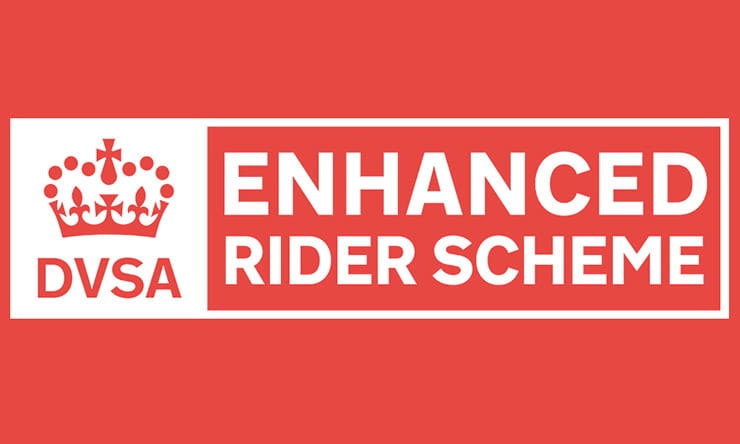Government Enhanced Rider Scheme relaunched to make "riding more enjoyable"
By Ben Purvis
Motorcycle Journalist
19.06.2018
It’s been more than a decade since the DVSA (Driver and Vehicle Standards Agency) first introduced its Enhanced Rider Scheme but if you haven’t heard of it, you’re not alone. And that’s one reason why the Scheme has just been revamped and relaunched.
The idea is simple enough; the scheme aims to persuade fully-licenced riders to undergo assessment and, if necessary, additional training to make them better and safer on the road. It’s a straightforward idea, but one that first means you must swallow your pride and admit that maybe – just maybe – there’s more you can be taught. There’s no test, simply the opportunity to improve.
Originally, the scheme’s main target was born-again riders; experienced motorcyclists returning to two wheels after a period away from bikes and needing a refresher to get back up to speed. Now, while born-agains are still sure to benefit, the DVSA is widening the net to attract newly-qualified, inexperienced motorcyclists who, despite having proved themselves capable enough to pass their test, could benefit from the confidence that some more expert tuition will foster.
Other changes include a rebranding – what used to be simply called the Enhanced Rider Scheme is now the DVSA Enhanced Rider Scheme to hammer home the fact that it’s a government-backed initiative – and a reworked syllabus to make it clearer what’s expected from those undertaking it. A new logo (above) also aims to emphases the ‘official’ nature of the scheme, and will be accompanied with new posters and leaflets to promote it.
How does it work?
The first port of call is to get an appointment for an assessment with one of the scheme’s expert trainers. They’ll take you out for an hour or two to see how you rider and to spot areas where you might improve.
In an ideal world, at the end of the assessment you’ll be told that you’re already up to the desired standard. In that case you’ll get a certificate sent out, which can help secure discounts on insurance costs.
If you’re not already the perfect rider, though, you’ll be able to work out a personalised scheme with your trainer to improve your weaknesses. On completing the required training, you get the certificate.
There’s no fixed cost for the scheme; prices will be set be the individual trainers themselves. However, the DVSA says that some local councils do provide subsidies towards covering the cost of the training, so it’s worth checking with them to see if you can get some assistance there.
Mark Winn, DVSA Chief Driving Examiner, said: “You’re never too experienced to learn more safety skills, and the DVSA enhanced rider scheme is all about helping make a ride out even more enjoyable.
“While experience and riding regularly help, there’s no substitute for the training, advice and tips you’ll get from an expert trainer.”
What’s actually taught?
While the scheme’s training will be tailored to individuals, the topics covered include defensive riding, hazard awareness, ‘progress’ and use of speed, and effective braking techniques.
You’ll also get instruction on overtaking and filtering, cornering and low-speed control. And even if your trainer doesn’t spot a problem in your assessment of course you’ll be able to bring up any areas that you’re particularly keen to focus on and discuss ways to improve them.
The full syllabus can be found here: https://www.gov.uk/government/publications/dvsa-enhanced-rider-scheme-syllabus/dvsa-enhanced-rider-scheme-syllabus
It also includes additional modules that you can sign up for even after you’ve completed the training, focussing on specific areas like carrying a pillion, riding abroad or riding as a courier.
Don’t need training? How about becoming a trainer, then?
The trainers in the scheme don’t need to be fully-qualified motorcycle instructors. In fact, anyone who’s over 21 and had a full licence or an A2 licence for at least three years can apply to become one.
The full details on how to do it can be found here: https://www.gov.uk/dvsa-enhanced-rider-scheme-trainer.
The testing to become a trainer includes a theory exam with 100 multiple-choice questions, plus a hazard perception test. You have to pay for the testing, of course, and a registration fee (for either one or four years’ registration as a trainer).
If you’re not already a certified instructor you’ll need to undergo a training course at one of six training centres approved by the DVSA (listed here). You’ll also be given a standards check within the first year of qualifying, with a DVSA examiner watching you train a pupil to make sure you’re up to scratch.
Share on social media:
